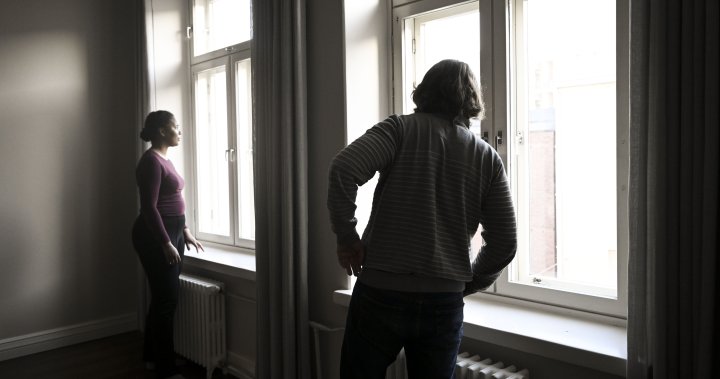As Quebec faces a worsening homelessness crisis, some politicians, including Quebec City Mayor Bruno Marchand, have suggested the solution may be a Finnish model that aims to give everyone a home.
But while Finland has managed to massively reduce the number of people experiencing homelessness through its “housing first” approach, one Quebec expert said she’s not sure it could be applied here, even if the provincial government was interested.
“It’s the right way to fight the problem of homelessness,” Helsinki Mayor Juhana Vartiainen said of his country’s approach in a recent interview.
The Finnish model is simple, he said: give people quality, permanent housing before attempting to address other issues — such as alcohol and drug use, or mental health problems — or helping people find jobs
“That’s really the fundamental idea of our policy, if we give people a home, there will be very positive side-effects,” Vartiainen said.
Giving people an apartment leads to improved health, less drug and alcohol use, he said, and increases the chance that people will find jobs. Once someone is given a home, he said, there are teams that ensure they receive the care and support required.
There were 18,000 people experiencing homelessness in Finland when the country first launched its effort to tackle the issue back in 1987. At the end of 2022, the figure had dropped to 3,686 in the country of 5.5 million, though only 492 spent the night outside.
In Quebec, 10,000 people were experiencing visible homelessness in October 2022 — the last time the provincial government counted — an increase of 44 per cent since 2018.
Annie Fontaine, a Universite Laval professor who specializes in social work, said Quebec could learn lessons from the Finnish model but described it as a “relatively unrealistic ideal in the context we’re experiencing right now.”
Get the latest National news.
Sent to your email, every day.
“There are a lot of structural, cultural and organizational aspects that are part of this program which make it difficult to imagine a simple, straightforward application in our political and socio-economic context here,” she said in an interview.
Fontaine warns against idealizing the Finnish model, noting it’s wrong to assume that placing someone in a home will automatically allow everything else to fall in place.
Everyone’s experience of homelessness is different, she said, and some paths out of it may be less linear. Some people who have been experiencing homelessness aren’t ready to live alone in an apartment, finding it isolating.
“Some sleep on the floor because they’re not able to live in the space,” she said.
Fontaine said she thinks the best approach is to provide multiple options, with different pathways and forms of aid.
The housing first model is a partnership between the Finnish state, its municipalities, and a dedicated organization known as the Y Foundation, or Y-S??ti? in Finnish.
As of June 2023, the non-profit supplied 18,688 low-cost housing units to 26,500 people, most of whom would otherwise be experiencing homelessness.
“When people have a roof over their heads, they can overcome the challenges they have in their lives and not have to worry about where they will sleep that night or will they will live next month,” Juha Kahila, the director of international affairs at the Y Foundation, said in an interview.
The organization’s buildings are located in normal residential neighbourhoods, which has caused resistance from people living nearby.
“Certainly, there were concerns,” Kahila said. “But people quickly realized it was a good idea and a good use of taxpayer money when they saw the drop in crime rates.”
In addition to individual apartments, the foundation has larger spaces that include small personal apartments and communal areas. Those spaces are typically intended for seniors or those who need support with addictions.
While the model comes with upfront costs, the foundation has estimated the program saves Finland up to 9,600 euros, or about $14,000, per person each year.
Kahila said he thinks the zero-homelessness model can be put in place elsewhere with the launch of a dedicated foundation like his.
“I don’t see why that wouldn’t work in Canada or in Quebec City,” he said. “It’s not necessary to copy the model exactly, but the idea behind the Y Foundation is totally possible to duplicate.”
Marchand — who pledged to eliminate homelessness in Quebec City by 2025 during a 2021 election campaign — said in early December that the promise may have been a bit “utopian.”
There’s also no sign the Finnish approach is on the province’s radar.
Lionel Carmant, the minister responsible for social services, said last autumn that Quebec has to slow the increase in homelessness before trying to do more.
“If we want to take steps that are too big, it won’t work,” Carmant said at the time
© 2023 The Canadian Press




